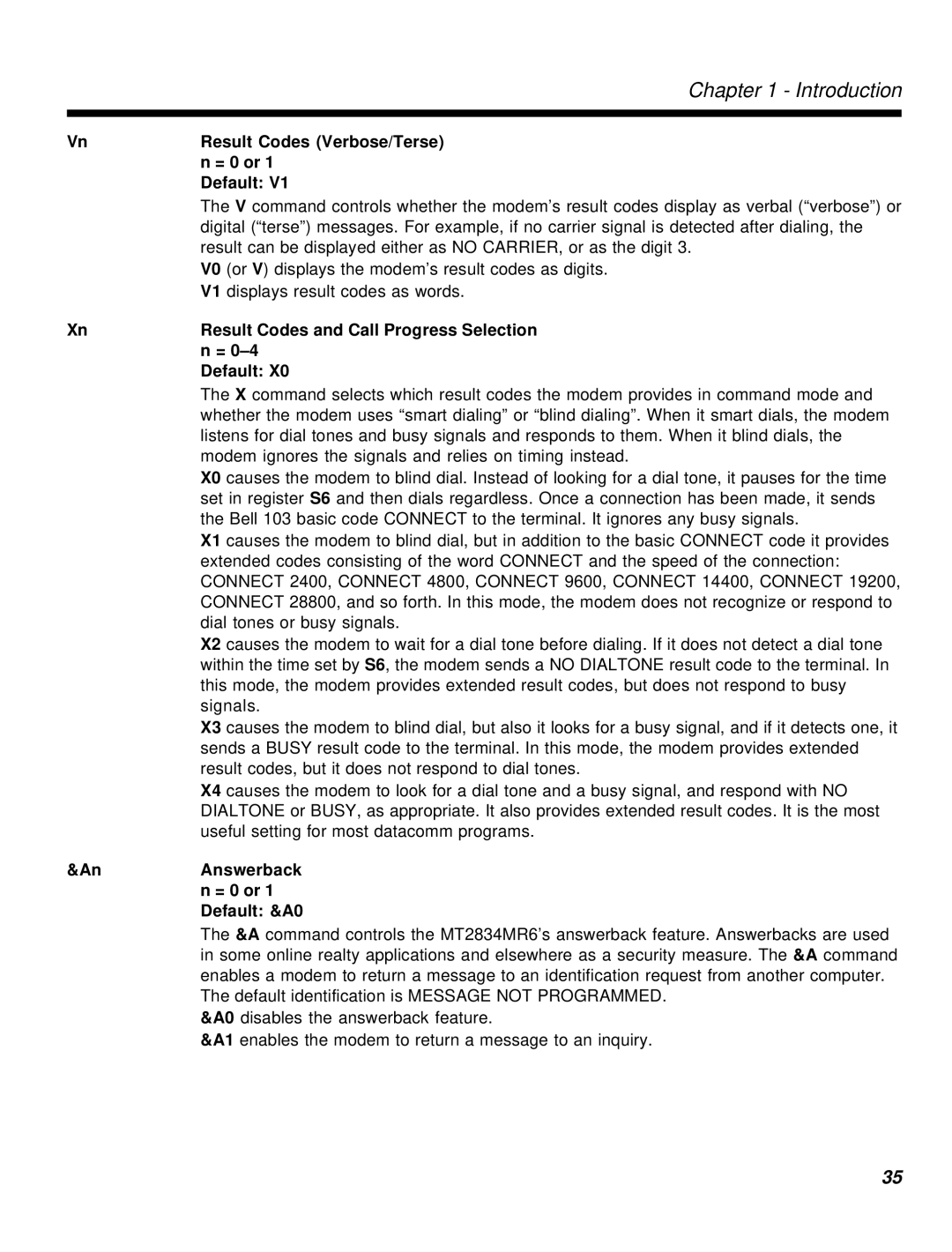Chapter 1 - Introduction
Vn | Result Codes (Verbose/Terse) |
| n = 0 or 1 |
| Default: V1 |
| The V command controls whether the modem’s result codes display as verbal (“verbose”) or |
| digital (“terse”) messages. For example, if no carrier signal is detected after dialing, the |
| result can be displayed either as NO CARRIER, or as the digit 3. |
| V0 (or V) displays the modem’s result codes as digits. |
| V1 displays result codes as words. |
Xn | Result Codes and Call Progress Selection |
| n = |
| Default: X0 |
| The X command selects which result codes the modem provides in command mode and |
| whether the modem uses “smart dialing” or “blind dialing”. When it smart dials, the modem |
| listens for dial tones and busy signals and responds to them. When it blind dials, the |
| modem ignores the signals and relies on timing instead. |
| X0 causes the modem to blind dial. Instead of looking for a dial tone, it pauses for the time |
| set in register S6 and then dials regardless. Once a connection has been made, it sends |
| the Bell 103 basic code CONNECT to the terminal. It ignores any busy signals. |
| X1 causes the modem to blind dial, but in addition to the basic CONNECT code it provides |
| extended codes consisting of the word CONNECT and the speed of the connection: |
| CONNECT 2400, CONNECT 4800, CONNECT 9600, CONNECT 14400, CONNECT 19200, |
| CONNECT 28800, and so forth. In this mode, the modem does not recognize or respond to |
| dial tones or busy signals. |
| X2 causes the modem to wait for a dial tone before dialing. If it does not detect a dial tone |
| within the time set by S6, the modem sends a NO DIALTONE result code to the terminal. In |
| this mode, the modem provides extended result codes, but does not respond to busy |
| signals. |
| X3 causes the modem to blind dial, but also it looks for a busy signal, and if it detects one, it |
| sends a BUSY result code to the terminal. In this mode, the modem provides extended |
| result codes, but it does not respond to dial tones. |
| X4 causes the modem to look for a dial tone and a busy signal, and respond with NO |
| DIALTONE or BUSY, as appropriate. It also provides extended result codes. It is the most |
| useful setting for most datacomm programs. |
&An | Answerback |
| n = 0 or 1 |
| Default: &A0 |
| The &A command controls the MT2834MR6’s answerback feature. Answerbacks are used |
| in some online realty applications and elsewhere as a security measure. The &A command |
| enables a modem to return a message to an identification request from another computer. |
| The default identification is MESSAGE NOT PROGRAMMED. |
| &A0 disables the answerback feature. |
| &A1 enables the modem to return a message to an inquiry. |
35
